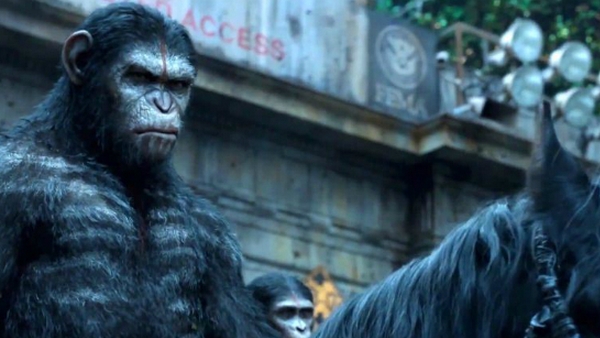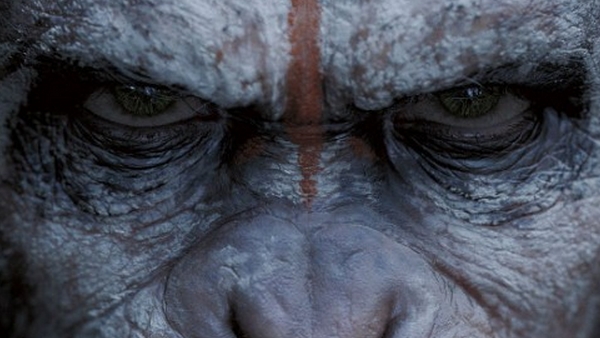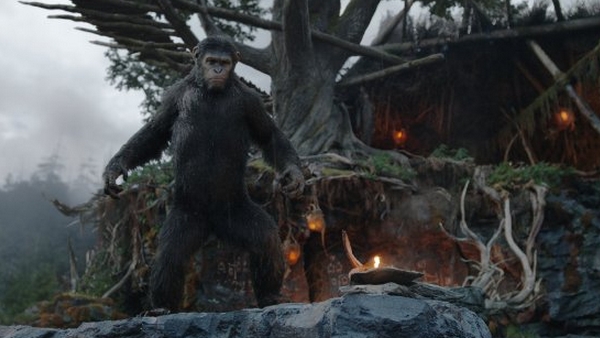 In 2011 Rise of the Planet of the Apes was an unexpected hit, that’s for sure. Rupert Wyatt made a film more about the human connection than the Apes and therefore was able to showcase sympathy and compassion ultimately downplaying the gruesome fall of man. It was a great film and now, in 2014, Matt Reeves puts his stamp on the series with an equally impressive follow up. Dawn of the Planet of the Apes perfectly compliments Wyatt’s efforts with a story that is a contrast in many ways but he continues in an equally engaging and fulfilling way. It’s an astounding film which this time focuses less on humans and more on the titular Apes, but that’s just one reason it all works so well.
In 2011 Rise of the Planet of the Apes was an unexpected hit, that’s for sure. Rupert Wyatt made a film more about the human connection than the Apes and therefore was able to showcase sympathy and compassion ultimately downplaying the gruesome fall of man. It was a great film and now, in 2014, Matt Reeves puts his stamp on the series with an equally impressive follow up. Dawn of the Planet of the Apes perfectly compliments Wyatt’s efforts with a story that is a contrast in many ways but he continues in an equally engaging and fulfilling way. It’s an astounding film which this time focuses less on humans and more on the titular Apes, but that’s just one reason it all works so well.
In the last decade, while much of the world has perished in the aftermath of the so-called simian flu, the Apes have thrived while the humans struggle to survive. There’s peace and harmony with nature in Caesar’s new mountain home but as all good films do, this story starts with a question: are the humans really gone? Beyond being an exploration of humanity and our internal struggles, Matt Reeves’ film is an exercise in suspense and uneasiness. Not one scene exists in the film where there isn’t an underlying note of tension and foreboding that something is off or bound to breaking the brief levity. There are many starts and stop and Reeves prolongs the action and conflicts until the very end of his 130 minute film. It may cause many to claim it runs too long but this is just one chapter in a larger story and Reeves is content to explore the drama, the compassion, the struggle and more in even the simplest or most banal of exchanges.
to survive. There’s peace and harmony with nature in Caesar’s new mountain home but as all good films do, this story starts with a question: are the humans really gone? Beyond being an exploration of humanity and our internal struggles, Matt Reeves’ film is an exercise in suspense and uneasiness. Not one scene exists in the film where there isn’t an underlying note of tension and foreboding that something is off or bound to breaking the brief levity. There are many starts and stop and Reeves prolongs the action and conflicts until the very end of his 130 minute film. It may cause many to claim it runs too long but this is just one chapter in a larger story and Reeves is content to explore the drama, the compassion, the struggle and more in even the simplest or most banal of exchanges.
As one critic noted about Rise, it “is a movie driven by facial expression and actions” and this is even more so the case with Reeves’ film. It’s less about the dwindling humans but more of the family dynamic between Caesar and his new family/kingdom but also the compassion and love he learned from his human caretakers. Heeding a creedo “Apes not kill apes” Caesar struggles with the fact that Apes and humans are more alike and it takes the entirety of the film for him to learn this hard fact, even at the risk of losing the ideas and friends that mean the most to him.
Aside from the narrative and Andy Serkis’ (again) exceptional performance, the real driving force of the film is the visual splendor – to say the CG is marvelous is a gross understatement. The Apes take on incredible realism (looks and fluidity) and as most of the film takes place in sunlight or daytime we see that Weta Digital has taken great pains to make us believe these Apes are real. Not only the CG but also the angles and cinematography are exemplary and shot randomly as if from the Ape’s perspective. On that note, at whatever the cost, see this in IMAX 3D. It’s exhibited in an aspect ratio closer to 4:3 as the screen, quite literally, is floor to ceiling and wall to wall. In a way, without cropping things out or framing them in a ‘cinematic’ manner, it adds a lot more depth and intimacy to the screen making the action, emotion and empathy more tangible.
Now it’s an understatement that the graphics look amazing. But, as nearly all acting exists in the eyes, it is up to them to tell the story – they’re so amazing you can’t tell if they’re real or not. Now to further help communicate themes and ideas with characters who don’t speak (and even those who do have few lines – remember, this film is more about the Apes) you let music tell a story and no one does tenderness with music these days like Michael Giacchino. Giacchino, a Matt Reeves regular, gets to have a lot of fun with his score because it, in many ways, is unconventional; it’s highly atmospheric and ethereal. Part Lost, part Super 8, it’s some of the most mature music he’s ever written. Only he’s not channeling anyone here, this is just Giacchino tapping into the story and grafting his musical nuance to the film’s core.

Not only is it restrained, playing up the more tonal and atmospheric elements, he also gets to delve pretty heavily into Jerry Goldsmith’s wheel house and play with some throwback sounds that defined the iconic Apes franchise. Even in the pure madness of Apes firing guns and, yes, even driving a tank, it’s not until the credits that he lets loose – his credit suites, time and again, allow him to showcase his many impressive, dynamic and virtuosic runs. In fact there’s credit music that’s not even in the film* and it begs the question where and how was it to be used and possibly where it may find a home in the next film or films.
G-S-T RULING:
Some will easily claim that the film is too long and that the humans take an almost non-existent role in the film. The former is justified and the latter is, well, the whole point of Reeves’ film. But in order to have a story of this magnitude play out, and therefore help bridge the gap between this and the Charlton Heston film, a lot of ground needs to be covered even if the events don’t seem like they need to be prolonged as much as they are. Seen through the eyes of Caesar, this, whether or not the story and franchise continues, is more than enough to hint at and allude to the further struggles that propel mankind to extinction. It’s an emotional, powerful and moralistic story that’s made all the more compelling because of Reeves’ masterful filmmaking.

* In a great interview with Collider Matt Reeves talks about how he plans to release an extended cut on Blu-ray (which will include additional music by composer Michael Giacchino) and the original ending of the movie.




